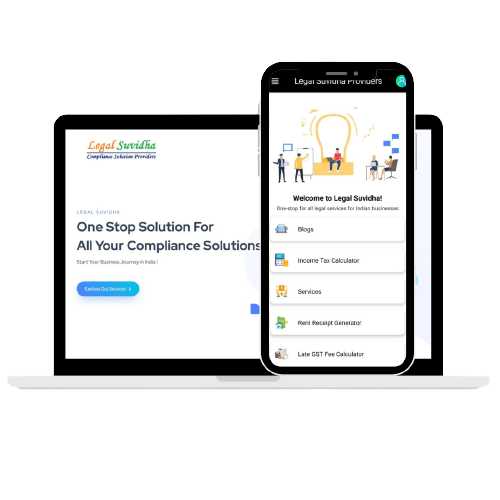Starting a new business venture is an exciting and challenging journey. As a startup founder, you need to pitch your idea to potential investors to raise capital and make your dream a reality. However, it’s not an easy task. A good pitch can make all the difference between attracting investors and losing their attention. A well-designed pitch deck can help you communicate your startup’s story and value proposition effectively. In this blog post, we’ll provide you with some essential tips on how to create a killer pitch deck for your startup.
- Start with a compelling opening
The opening of your pitch deck is critical as it sets the tone for the entire presentation. You need to grab your audience’s attention right from the start and make them interested in your idea. You can use a hook, a question, or a statistic to engage your audience and keep them interested.
- Explain your problem and solution
Next, you need to explain the problem you are solving and how your startup’s solution is unique and innovative. You should focus on the points of your target customers and how your solution solves their problems. Make sure you clearly express the value proposition of your product or service.
- Highlight your market opportunity
Investors want to see the potential market opportunity for your startup. You need to provide a clear and realistic market size and opportunity for your product or service. It would be best if you also discussed your competition and how your product or service is different from theirs.
- Showcase your team
Investors invest in people as much as they invest in the idea. You need to highlight your team’s experience, skills, and expertise. You should also discuss the roles and responsibilities of each team member and how they contribute to the success of your startup.
- Demonstrate your traction
Investors want to see that your startup has traction and is making progress. You must demonstrate your milestones, such as the number of customers, revenue, partnerships, or awards. You can also showcase your user engagement, retention, or growth metrics.
- Keep it simple and visual
Your pitch deck should be simple, clear, and easy to understand. Use simple language and avoid technical terms that may confuse your audience. You should also use visuals, such as images, graphs, or charts, to illustrate your points and make your pitch more engaging.
- End with a clear call to action
Finally, you need to end your pitch deck with a clear call to action. You should explain what you are looking for, such as funding, partnership, or mentorship. You should also provide your contact information and invite your audience to ask questions or provide feedback.
In conclusion, creating a killer pitch deck is crucial for any startup founder looking to raise capital and grow their business. You need to focus on your story, problem, solution, market opportunity, team, traction, simplicity, and call to action. Remember to practice your pitch and get feedback from peers, mentors, or investors. With a well-crafted pitch deck, you can convince investors to support your startup and make your dream a reality.
10 Essential Elements to Include in Your Startup Pitch Deck
As a startup founder, one of your most critical tasks is to create a compelling pitch deck that can persuade investors to invest in your company. A pitch deck is a brief presentation that communicates your business idea, value proposition, and potential to investors. However, creating a killer pitch deck is not an easy task, especially if you’re new to fundraising. In this article, we’ll discuss ten essential elements that you should include in your startup pitch deck to make it more effective.
- Problem Statement
Start your pitch deck with a clear and concise statement of the problem that your product or service solves. You need to explain the points of your target customers and how your solution addresses them. Make sure you focus on the problem that your startup solves and why it matters.
- Solution
After introducing the problem, you need to explain your solution. You should provide a brief overview of your product or service and how it works. Make sure you highlight your solution’s unique features and benefits and how it differentiates from your competitors.
- Market Opportunity
Investors want to know the potential market size and opportunity for your product or service. You need to provide a realistic and data-driven estimate of your total addressable market (TAM), serviceable available market (SAM), and target market. You should also discuss the market trends, customer segments, and user personas.
- Business Model
Your pitch deck should include a clear and compelling business model. You need to explain how your startup generates revenue, how you price your product or service, and how you plan to scale your business. Make sure you provide evidence that your business model is feasible and sustainable.
- Marketing and Sales Strategy
Investors want to see that you have a clear plan for acquiring and retaining customers. You need to explain your marketing and sales strategy, including how you reach your target audience, how you generate leads, and how you convert them into paying customers. Make sure you discuss the channels, tactics, and metrics you use to measure the effectiveness of your marketing and sales efforts.
- Competitive Landscape
Your pitch deck should include a competitive landscape analysis that shows your knowledge of the market and the competition. You need to explain who your direct and indirect competitors are, how they differ from your startup, and how you plan to compete and win against them. Make sure you discuss your competitive advantages and barriers to entry.
- Team
Investors invest in people as much as they invest in the idea. You need to showcase your team’s experience, skills, and expertise. Make sure you introduce your team members and explain their roles and responsibilities. You should also highlight your team’s track record and accomplishments.
- Traction
Investors want to see evidence that your startup has traction and is making progress. You need to provide a clear and data-driven overview of your key performance indicators (KPIs), such as customer acquisition, revenue, user engagement, or retention. Make sure you discuss your milestones and achievements to date.
- Financials
Your pitch deck should include a clear and realistic financial projection. You need to explain your revenue streams, cost structure, and cash flow projections. Make sure you provide evidence that your financials are achievable and scalable. You should also discuss your fundraising history and the amount of funding you’re seeking.
- Ask and Closing
Finally, you need to end your pitch deck with a clear and compelling ask. You should explain what you’re looking for, such as funding, partnership, or mentorship. Make sure you provide your contact information and invite your audience to ask questions or provide feedback.
The Dos and Don’ts of Pitch Deck Design
Pitch deck design plays a crucial role in conveying your startup’s message and getting the attention of potential investors. A well-designed pitch deck can make your presentation more engaging, memorable, and persuasive. However, there are some dos and don’ts to keep in mind when creating your pitch deck design. In this article, we’ll discuss some of them to help you create an effective and visually appealing pitch deck.
Dos:
- Keep it simple: Your pitch deck should be easy to read and understand. Avoid cluttered slides with too much text or graphics. Use simple and clear language to convey your message.
- Use visual aids: Use relevant images, charts, and graphs to illustrate your points and make your pitch more engaging. Use colors and fonts that match your brand and convey your message effectively.
- Create a consistent style: Use a consistent design style throughout your pitch deck to make it look professional. Use the same color scheme, font, and layout for all your slides.
- Tell a story: Use your pitch deck design to tell a story about your startup, its journey, and its future. Use visuals and graphics to create a narrative that resonates with your audience.
- Use data visualization: Use data visualization to present your metrics, growth, and potential. Use charts and graphs to make your data more understandable.
Don’ts:
- Use too much text: Avoid using too much text on your slides. Use bullet points and short sentences to convey your message.
- Use too many colors: Using too many colors can make your pitch deck look unprofessional and cluttered. Stick to a color scheme that matches your brand and message.
- Overuse animations: Animations can be distracting and take away from your message. Use animations sparingly and only when necessary.
- Copy other pitch decks: Don’t copy other pitch decks’ designs. Create a unique design that reflects your startup’s brand and message.
- Use low-quality images: Avoid using low-quality images or graphics. Use high-quality images that are relevant to your message and enhance your pitch.
How to Use Data Visualization to Enhance Your Pitch Deck
Data visualization is an effective way to communicate complex information and make it more digestible for your audience. When used correctly, data visualization can help you enhance your pitch deck and make your presentation more engaging and persuasive. In this article, we’ll discuss how you can use data visualization to enhance your pitch deck.
- Identify the most important data: The first step in using data visualization in your pitch deck is to identify the most important data to include. This could be your startup’s growth metrics, market size, or customer data. Choose data that supports your pitch and helps you make your case to investors.
- Choose the right type of visualization: There are various types of data visualizations you can use, including charts, graphs, maps, and infographics. Choose the type of visualization that best represents your data and makes it easy to understand.
- Keep it simple: When creating data visualizations for your pitch deck, it’s important to keep them simple and easy to read. Avoid using too much data or cluttering your visualizations with unnecessary elements. Stick to the most important data points and use a clear and concise design.
- Use colors effectively: Colors can be used to highlight important data points and make your visualizations more engaging. Use colors that match your brand and convey your message effectively.
- Make it interactive: Interactive data visualizations can be a great way to engage your audience and make your pitch more memorable. Consider using interactive elements such as clickable charts or infographics that allow your audience to explore your data in more detail.
- Tell a story: Use data visualizations to tell a story about your startup and its potential. Use charts and graphs to illustrate your startup’s growth and potential, and use infographics to explain complex concepts in a simple and engaging way.
In conclusion, data visualization can be a powerful tool for enhancing your pitch deck and making your presentation more engaging and persuasive. By choosing the right type of visualization, keeping it simple, using colors effectively, making it interactive, and telling a story, you can create data visualizations that effectively communicate your startup’s potential and help you secure funding from investors.
If You have any queries then connect with us at [email protected] or you can contact us & stay updated with our latest blogs & articles









